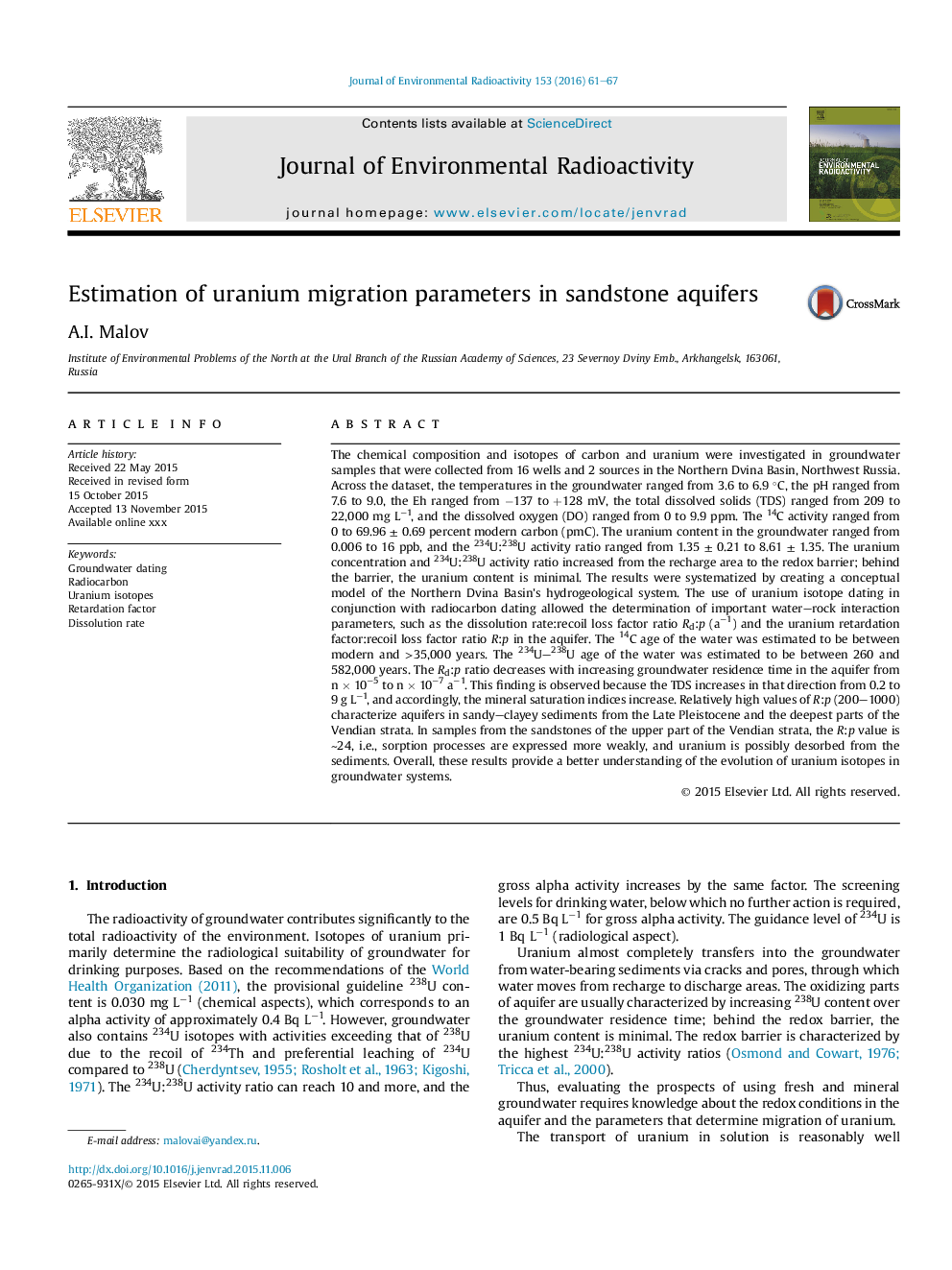| Article ID | Journal | Published Year | Pages | File Type |
|---|---|---|---|---|
| 8081990 | Journal of Environmental Radioactivity | 2016 | 7 Pages |
Abstract
The chemical composition and isotopes of carbon and uranium were investigated in groundwater samples that were collected from 16 wells and 2 sources in the Northern Dvina Basin, Northwest Russia. Across the dataset, the temperatures in the groundwater ranged from 3.6 to 6.9 °C, the pH ranged from 7.6 to 9.0, the Eh ranged from â137 to +128 mV, the total dissolved solids (TDS) ranged from 209 to 22,000 mg Lâ1, and the dissolved oxygen (DO) ranged from 0 to 9.9 ppm. The 14C activity ranged from 0 to 69.96 ± 0.69 percent modern carbon (pmC). The uranium content in the groundwater ranged from 0.006 to 16 ppb, and the 234U:238U activity ratio ranged from 1.35 ± 0.21 to 8.61 ± 1.35. The uranium concentration and 234U:238U activity ratio increased from the recharge area to the redox barrier; behind the barrier, the uranium content is minimal. The results were systematized by creating a conceptual model of the Northern Dvina Basin's hydrogeological system. The use of uranium isotope dating in conjunction with radiocarbon dating allowed the determination of important water-rock interaction parameters, such as the dissolution rate:recoil loss factor ratio Rd:p (aâ1) and the uranium retardation factor:recoil loss factor ratio R:p in the aquifer. The 14C age of the water was estimated to be between modern and >35,000 years. The 234U-238U age of the water was estimated to be between 260 and 582,000 years. The Rd:p ratio decreases with increasing groundwater residence time in the aquifer from n Ã 10â5 to n Ã 10â7 aâ1. This finding is observed because the TDS increases in that direction from 0.2 to 9 g Lâ1, and accordingly, the mineral saturation indices increase. Relatively high values of R:p (200-1000) characterize aquifers in sandy-clayey sediments from the Late Pleistocene and the deepest parts of the Vendian strata. In samples from the sandstones of the upper part of the Vendian strata, the R:p value is â¼24, i.e., sorption processes are expressed more weakly, and uranium is possibly desorbed from the sediments. Overall, these results provide a better understanding of the evolution of uranium isotopes in groundwater systems.
Related Topics
Physical Sciences and Engineering
Energy
Nuclear Energy and Engineering
Authors
A.I. Malov,
